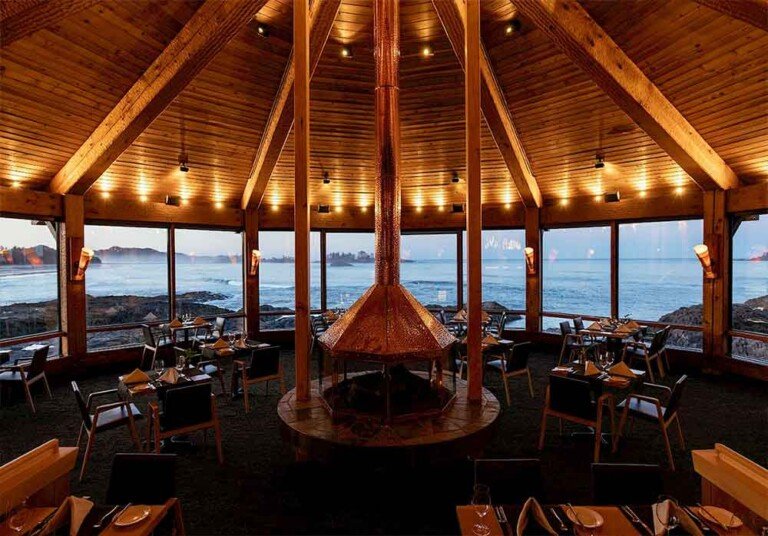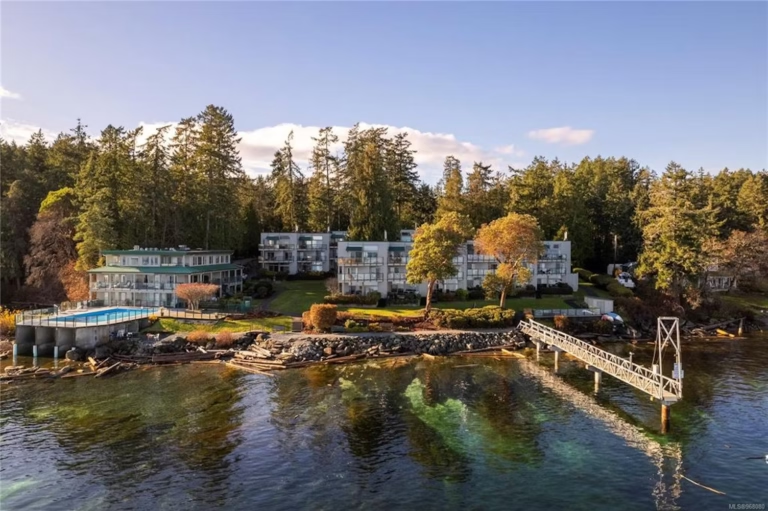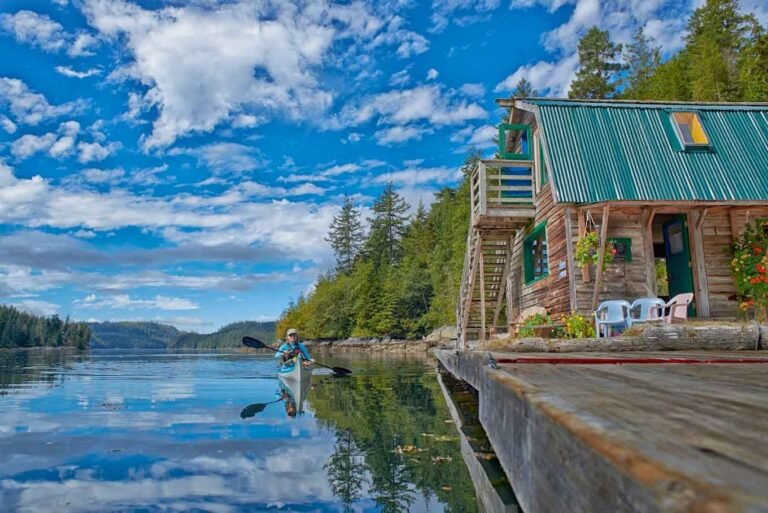Toad River, at Mile 422 on the Alaska Highway, is a town with a collection of 4,580 hats – one for every mile between the Yukon and the continental United States, plus a few extras for every head in town.
It is almost impossible not to observe wildlife as you travel through the Northeast, the so-called Serengeti of North America. The area’s spectacular wildlife fauna consists of eight species of ungulates, namely Stone Sheep, mountain goats, bison, moose, elk, caribou, and white-tailed and mule deer; plus at least seven species of medium-sized carnivores including wolves, coyotes, foxes, grizzly bears, black bears, lynx and wolverines.
Deer, moose, bears, and elk frequent clearings alongside roads, foraging for food. In some areas, salt licks have been placed near the road to attract ungulates. Be careful when driving these roads, especially at night; if you were to hit a moose, the chances are good that your vehicle would come out of the encounter in worse shape than the moose. Honest.
Back when the Alaska Highway was still a gravel road, the small roadside stations were the essence of life and travel along this long and lonely highway, and they still remain invaluable to the weary traveller today.
Population: 60
Location: Toad River, at Mile 422 on the Alaska Highway 97 is 121 miles (195 km) west of Fort Nelson on the way to the Yukon.
The Contract Creek Bridge at Mile 588 on the Alaska Highway marks the point where the construction crews met when building the section of the highway west from Fort Nelson and east from Whitehorse.
The Summit at Mile 374 is the highest point on the Alaska Highway, at 4,250 feet. The Muskwa Bridge, south of Fort Nelson at Mile 281, is the lowest point on the Highway, at 1,000 feet.
Provincial Parks: There are eight provincial parks in the Northern Rockies Regional District, including Stone Mountain Provincial Park, Muncho Lake Provincial Park and Liard River Hot Springs Provincial Park. Wildlife is found in abundance in this scenic region, with many close and frequent sightings of elk, moose, and bears. Bald eagles soar up above, while goshawks, great horned owls and peregrine falcons are also sighted.
The jewel of this area is Kwadacha Wilderness Provincial Park. There are so many truly immense wilderness areas in northern British Columbia, that at 158,000 hectares, Kwadacha seems modest compared to Spatsizi Plateau, Mount Edziza or Tweedsmuir. However, this park’s Lloyd George Icefield is the largest icefield in the Rocky Mountains north of the 54th parallel. There is no access by road into the park; it must be reached by air or on horseback. It’s about 150 km of backpacking just to make it to the park from the highway, with many treacherous river crossings: allow 12 to 14 days. Trails within this park are not maintained, and only experienced backpackers should venture here. This is beautiful but unforgiving country.
Stone Mountain Provincial Park: One of the most exposed campgrounds in the province, and also one of the most beautifully situated, is the Summit Lake Provincial Campground in Stone Mountain Provincial Park, 140 km west of Fort Nelson. All sites sit within open view of each other, the highway, and the surrounding smooth summits of the Stone Mountain Range. Much of the park lies in the alpine tundra biogeoclimatic zone, which means that trees are scarce and mountains of little more than solid rock reach for the sky. Surviving plant life is pretty much limited to lichen, grasses and moss. The contrast with the rolling, tree-covered foothills further south is startling. The campground is located just north of the highest point on elevation on the highway, and also just north of one of the last remaining sections of unpaved highways. If travelling north, this is a good place to pull out and relax. If you’re here around sunset, the sight of the Stone Mountains reflected on Summit Lake’s surface is mesmerizing. Hikers can plan a 7 to 14 day loop through the headwaters of Machttps://britishcolumbia.com/wp-content/uploads/2020/07/discovery-islands-lodge-1-accommodation-quadra-island-british-columbia-1.jpg Creek and the adjacent Wokkpash Recreational Area.
Muncho Lake Provincial Park: The 90-km drive through Muncho Lake Provincial Park has a reputation for being the most scenic part of the Alaska Highway. It is also one of the most informative, as roadside pullouts appear frequently. Interpretive displays provide details on wildlife, geographical features and hiking trails. Accessing higher regions of the Rocky Mountains from here is easy – pick a wash, any wash, and up you go. The park has two separate campgrounds situated on the shores of one of the loveliest big lakes anywhere. Muncho Lake displays a perpetual blue hue, the result of copper oxides leached from the bedrock. Strawberry Flats Campground offers vehicle/tent sites at the south end of the lake, while Machttps://britishcolumbia.com/wp-content/uploads/2020/07/discovery-islands-lodge-1-accommodation-quadra-island-british-columbia-1.jpg Campground has the same number of campsites at roughly the midpoint of the 12-km long lake. There are small beaches at each location. Machttps://britishcolumbia.com/wp-content/uploads/2020/07/discovery-islands-lodge-1-accommodation-quadra-island-british-columbia-1.jpg has its own boat launch, and car-top boats can be launched at Strawberry. The terminal range is on the west side of the lake, while the Sentinel Ranges, rising sharply above the campgrounds to the east, are near the northern limits of the Rockies. One of the best ways to appreciate them is to either get out on the lake in a boat or hike up into them from nearby trails. Wilderness campsites are located along the west side of Muncho Lake for those willing to make the crossing by boat. Highway 97 passes beside both campgrounds.
Mineral Licks: At Mile 454, a 5 to 10 minute walk to viewpoints of Trout River and mineral laden banks – Mineral Licks. Wildlife is usually abundant here. Visitors to this site should exercise caution ascending the steep, slippery banks.
Visit the Liard Hot Springs in Liard River Hot Springs Provincial Park , where you can enjoy a year-round soak in a natural setting and where one of the world’s unique ecosystems thrives.
Circle Tours: See the best of Northern BC on one of the Circle Tours that capture the wonders of the north. The Circle Tour of Northern British Columbia incorporates the Alaska Highway through the Rocky Mountain foothills to Watson Lake in the Yukon, linking with the Stewart/Cassiar Highway and Yellowhead Highway 16 in the south. The Inside Passage Circle Tour and the Native Heritage Circle Tour follow the same route, from Port Hardy on Vancouver Island north by ferry to Prince Rupert. Catch another ferry to the Queen Charlotte Islands, or venture east on the Yellowhead Highway to Prince George, and south through the peaceful Cariboo to Vancouver along the historic Cariboo Wagon Road.
Circle Tours in British Columbia.




